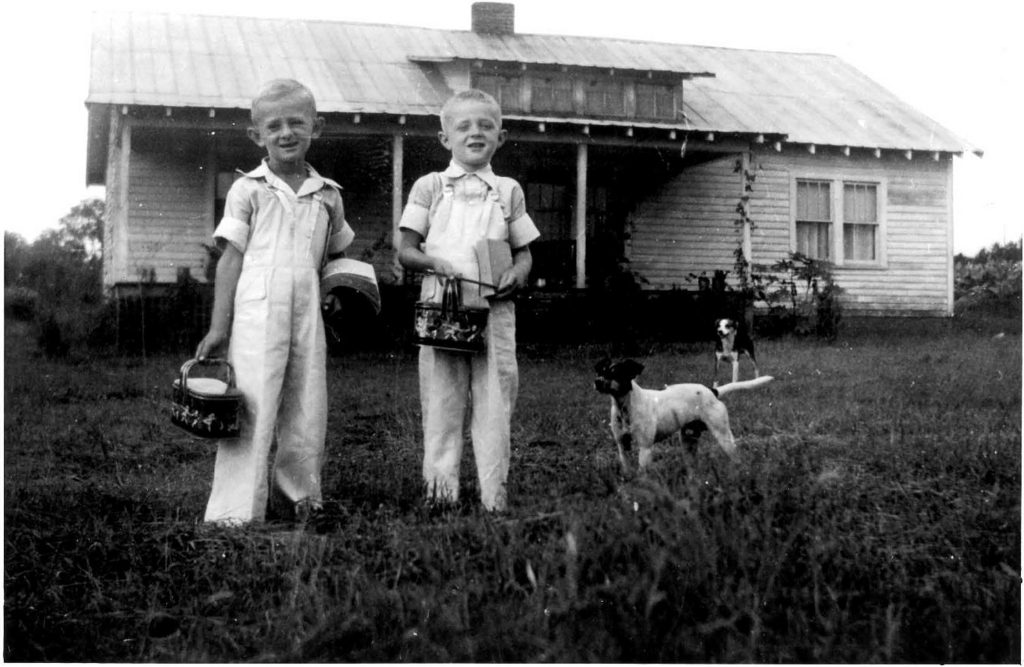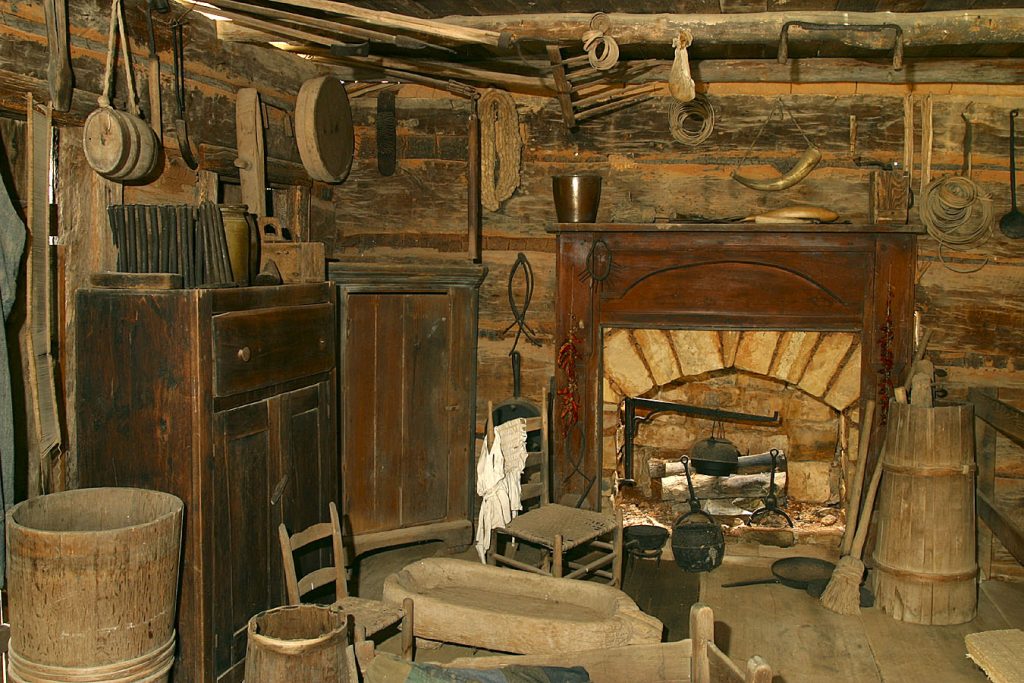“A generation that ignores history has no past and no future.” – Robert Heinlein
“My friends,” John Rice Irwin has written, “are the warm, happy, independent folk of these southern mountains. They are my people and the people I love. Because of them, I started the Museum of Appalachia and so it is to them that its Hall of Fame is dedicated.” Today, the life and legacy of this remarkable man is on full display at a small farm in Norris, Tennessee. May his works forever preserve the rich heritage of our region for future generations.
Irwin was born in Union County during the Great Depression. In these hard times, the Irwin family had to move from their farmlands to make way for the construction of the Norris Dam and the flooding of Norris Lake. The family first settled in Anderson County on a farm in Robertsville, which is now a part of Oak Ridge, but the top-secret atomic weapons project forced yet another move, this time to a farm in the Bethel community of the same county.

As Irwin learned how to farm, hunt, trap, and fish on the property, he developed a strong interest in the cultural history of the area. Upon graduating from high school, he served a hitch in the US Army, stationed in Germany during the Korean War. Determined to continue his education, Irwin returned to East Tennessee after his discharge, using the GI Bill to earn a bachelor’s degree in history at Lincoln Memorial University and then a master’s degree in international law at the University of Tennessee. In 1954, he married Elizabeth McDaniel, a union which produced two daughters, first Karen, and then Elaine. Seven years later, at the age of 31, Irwin became the youngest superintendent of schools in the state when elected to the position in Anderson County.
As a boy, Irwin had loved to hear stories of the past from his grandmother, Ibbie Jane Rice, and especially those of his grandfather, Marcellus Moss “Sill” Rice, who took notice of his grandson’s keen interest in their remembrances. “You ought to keep the old-timey things that belonged to our people,” Sill advised, “and start you a little museum sometime.” By age 17, Irwin had published his first literary effort, The History of Rice’s Old Gristmill, taken from family lore. Years passed, however, before he began to heed the advice of his grandfather.
At an auction sale in the 1960s, Irwin seethed when a stranger from “up North” mentioned that he planned to turn an antique wagon seat he had just purchased into a coffee table for his home. His emotions stirred. Irwin began to use his Saturdays to travel the countryside, purchasing every Appalachian artifact he could afford—from farm implements to musical instruments—all in his mission to “save the past.” The Museum of Appalachia officially opened its doors in 1969 as an Irwin family business.

Meanwhile, Irwin stayed on as the Director of the Tennessee Appalachian Educational Cooperative in Oak Ridge but continued to use his spare time to purchase relics reflective of the region. The popular Elizabeth and her girls operated the fledgling museum in a log building on the family farm. Upon his retirement in 1980, Irwin began to devote his full-time efforts to the growth of the museum’s collections and the development of its grounds. Yet the day-to-day operations and special events, such as the annual Tennessee Fall Homecoming weekend—complete with bluegrass music, storytelling, and country cooking—were definitely family affairs.
Over time, Irwin published numerous books on a variety of Appalachian themes, including baskets and basket makers, quilts, guns and gun makers, musical instruments, and, of course, country music. His first book, however, is perhaps his favorite, The Story of Marcellus Moss Rice and His Big Valley Kinsmen, a collection of Sill’s tales about the Rice family and their friends. Now having survived wife Elizabeth, who died in 2008, and daughter Karen, Irwin, at the age of 91, continues to list his maternal grandfather as the major inspiration for his life’s work.
During the last half century, Tennesseans like Senators Howard Baker and Lamar Alexander, four-star General Carl Stiner, singer Mary Costa, and writer Alex Haley embraced the culture and history of the museum. The big-hearted Haley spent holidays with his adoptive family, “found the good and praised it,” and eventually built a home in Norris, located only a stone’s throw from the museum. His death in 1992 was a lost treasure. Photographs of other celebrity visitors—among them, Oprah Winfrey, Brooke Shields, and Martha Stewart—adorn the walls of Heritage Hall, but it is the Hall of Fame that features the heroes of these parts of the Southern Appalachian Mountains. Those featured include such notables as World War I hero Alvin York, World War II Secretary of State Cordell Hull, musicians like the Carter family, Roy Acuff, Dolly Parton, Grandpa Jones, and even grocer/politician/TV program host Cas Walker of Knoxville. Importantly, the museum also features extraordinary individuals in our area who lived their lives out of the limelight.
By 2003, the museum had converted into a non-profit organization, and in 2007, while boasting more than 40 rustic structures, four display buildings, farm animals of all kinds, and, of course, authentic Southern cuisine, the museum announced its association with the Smithsonian Institution, an arrangement that is likely to continue in perpetuity. The Irwin family is still vitally involved in the operations. Elaine Irwin Meyer is the President and CEO. Husband Ed heads up a group of dedicated volunteers. Their daughter, Lindsey Gallaher, is not only Elaine’s top assistant, she also serves on the board of directors made up of the likes of former University of Tennessee president Joe Johnson. Immediate past board chair Steve Dean, best known as the executive producer of WBIR television’s The Heartland Series, is an ardent supporter. “The true beauty of the museum is far more than the exceptional collection on display,” he maintains. “It is the story of the people who owned and used these artifacts that provides context in such a meaningful way.”

A touching illustration is that of an elderly man who, in 1926, went blind when his only grandson, who lived in the same house on the same farm, was still a young boy. In his mind, the image of the child’s face was locked in time. As the years passed, the grandfather spent many of his days carving toys suitable for “the boy” even as he grew into adulthood. All the while, the young man served as the eyes in his grandfather’s blacksmith shop, and there was nothing “Grandpa” would not do for him in return. When the beloved grandson reached 18, he was called on to serve his country in a time of war. Fearful for his safety, the grandfather begged to go with him to serve as his protector. The fates of both the grandfather and the grandson are, of course, on display at the museum—serving as the closing chapter of this heartwarming relationship.
Another narrative comes from the Irwin family. Irwin’s paternal grandmother, “Granny” Sarah Jane Irwin, was one of nine children. Prevented by her father from enrolling in school because “girls didn’t need an education for domestic work,” she washed, ironed, mended clothes, darned socks, cooked, baked, and cleaned house. When she was still a girl, the garden became her responsibility. At harvest, she canned hundreds of jars of tomatoes, pickles, okra, beets, blackberries, strawberries, peaches, pears, and even pork sausage and ribs. She dried beans and apples for the winter and, during the colder months, made time to sew and quilt. Her labors, most often beginning before daylight and lasting well after dusk, continued throughout her marriage and for the rest of her life. Irwin called her “the most prodigious worker” he had ever known. After her death, he was overcome with emotion when he discovered “Granny’s Christmas Quilt.” The patchwork blanket was a representation of her life, listing the names of her entire family and including each word of the Lord’s Prayer. A chicken and its eggs, which were her only means of income, were prominently sewn into the fabric as were a favorite dog, a butterfly, a bird, and the words “God Bless Our Home.” The most dramatic visual in the quilt’s content, however, are the words “Remember Me,” vertically stitched near the center of her elaborate design.
While adored by her family, her identity, Irwin realized for the first time, was that of wife to her husband, mother to her children, and “Granny” to her grandchildren. Like so many other women of her day, she had been taken largely for granted—known less in her own right than in those she loved and served so selflessly for an entire lifetime. Her lasting wish was simply to be remembered.
These stories and so many more like them touch our hearts and souls and make the museum a “must see” for the good people of Appalachia.
To learn more about the Museum of Appalachia, visit www.museumofappalachia.org.
